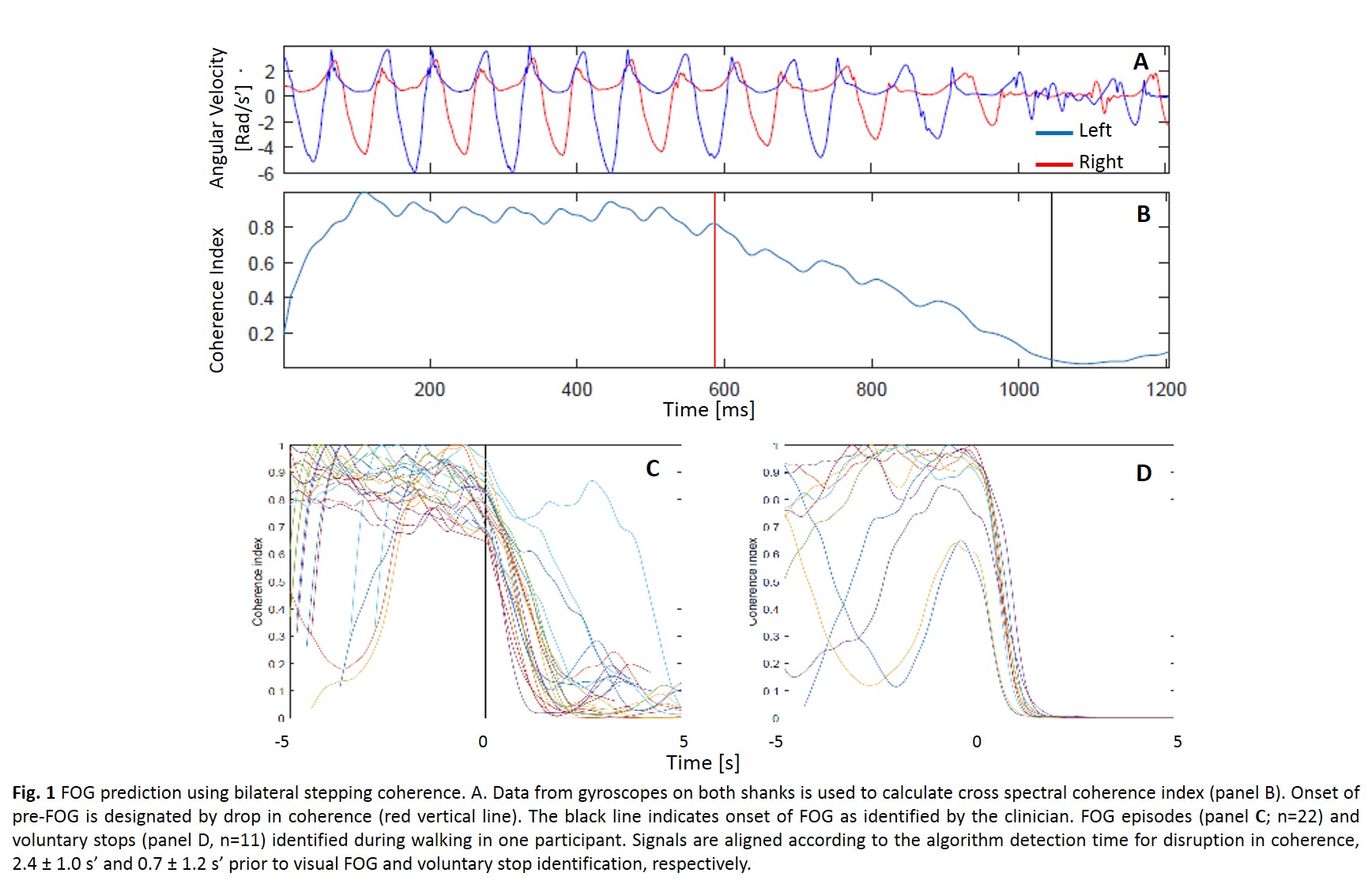Category: Parkinson's Disease: Neurophysiology
Objective: To evaluate the characteristics of a freezing of gait (FOG) detection algorithm based on continuous data from inertial sensors (placed bilaterally on the shanks of the legs) during ambulation of participants with Parkinson’s disease.
Background: In the past decade, many studies investigated the use of wearable sensors to predict and detect FOG episodes. Impaired bilateral coordination of gait (BCG) was implicated with FOG in Parkinson’s disease (PD). However, exploring automated algorithms to detect failed BCG prior and during FOG episode has not been attempted.
Method: Six participants with PD (65.7 ± 10.5 years, all males) wore mobility sensors (APDM®, Oregon, USA) and performed over-ground gait trials which included FOG provoking circumstances (e.g., 180⁰ turns, narrow paths, etc.) as well as voluntary stops. Video recordings synchronized with the sensors were annotated post-hoc by a physiotherapist and a physiologist, and onset and offset times of FOG episodes were recorded. Sagittal plane angular velocity signals from shank sensors (Fig. 1A) were fed offline into a MATLAB-based algorithm that used wavelet analysis to assess the spectral properties of the signals over time. A coherence index was computed (i.e., between signals recorded from the two sensors; Fig. 1B), and the algorithm marked sudden drops in coherence.
Results: Total of 64 FOG events were identified by post-hoc video viewing. The offline MATLAB algorithm detected upcoming FOG events 2.9±1.7 seconds prior to the researcher’s/clinician’s video- based annotation of FOG. In contrast, voluntary stops (n=34) were marked by the algorithm 0.8±1.5 seconds before the clinician. Figure 1C,D depicts examples from one participant.
Conclusion: Wavelet coherence appears to be a promising tool in predicting an upcoming occurrence of a FOG episode, in agreement with the implication of impaired BCD with the symptom. Further work will attempt to adapt the algorithm to work in real time, in order to provide as early as possible warning prior to FOG episode and elicit a behavioral, or technological (e.g., external stimulation) responses to avert the episode.
To cite this abstract in AMA style:
T. Krasovsky, M. Plotnik. Wearable sensors- early prediction of freezing of gait episodes based on bilateral leg stepping coherence in patients with Parkinson’s disease [abstract]. Mov Disord. 2020; 35 (suppl 1). https://www.mdsabstracts.org/abstract/wearable-sensors-early-prediction-of-freezing-of-gait-episodes-based-on-bilateral-leg-stepping-coherence-in-patients-with-parkinsons-disease/. Accessed April 22, 2025.« Back to MDS Virtual Congress 2020
MDS Abstracts - https://www.mdsabstracts.org/abstract/wearable-sensors-early-prediction-of-freezing-of-gait-episodes-based-on-bilateral-leg-stepping-coherence-in-patients-with-parkinsons-disease/

